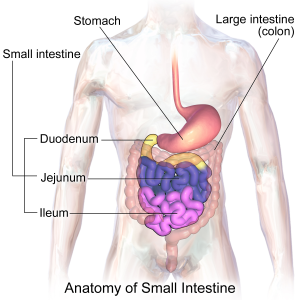
Anyone who has taken Anatomy 101 (or at least grew up on Bill Nye the Science Guy or Ms. Frizzle’s Magic School Bus) can safely say that they have a working understanding of the body’s various systems and organs. But just when you thought you knew the human body and have mastered every organ that there is to know…surprise!
Lancet Gastroenterology & Hepatology (November 2016) reports the work of Dr. J. Calvin Coffey, a study author and surgeon at the University of Limerick, Ireland, who has discovered the “newest” organ, the mesentery. (Fun fact: The mesentery is the 79th organ. Free massage for anyone who can name the other 78.) In truth, it was discovered (but misunderstood) years ago. It was described in 1885 by Dr. Frederick Treves, an accomplished digestive expert, as unconnected sections of fatty membranes which anchor the intestines to the spine and keeps them in place. Having studied the gastrointestinal system of over 100 cadavers, Dr. Treves’s word was final on matters of the gut.
More than a century later, Coffey has successfully proven that the mesentery is so much more than a disparate double sheet of connective tissue. The mesentery is a legitimate organ, a self-contained unit which serves a specific purpose. According to Coffey, “This organ is far from fragmented and complex. It is simply one continuous structure,” which spans the small intestine, large intestine, and the rectum. Furthermore, it is impossible for one to survive without the mesentery, according to Coffey.
Now that we know that the mesentery is in fact an organ, the emergent question is…What is its function? Exploration of this question may enable advances in digestive disease treatment, such as Crohn’s Disease or Irritable Bowel Syndrome. As we uncover the true nature of this organ, we can hopefully unlock its full potential.
Pelvic floor physical therapy is currently an evidenced based, effective, and conservative form of treatment for bowel related disorders. These types of disorders are often accompanied by pelvic floor musculoskeletal issues which can be addressed in therapy. Bowel massage techniques are incorporated to improve intestinal transit time. In addition, the central nervous system may become hyper-sensitized, or upregulated, which can be addressed with relaxation training techniques in treatment. If you or someone you know stand to benefit from pelvic floor physical therapy for bowel dysfunction, feel free to contact us at Revitalize Physical Therapy. It would be our pleasure to answer your questions and to help in any way possible.
Coffey, J Calvin; O’Leary, D Peter (2016). “The mesentery: structure, function, and role in disease”. The Lancet Gastroenterology & Hepatology. 1 (3): 238–247. doi:10.1016/S2468-1253(16)30026-7.


